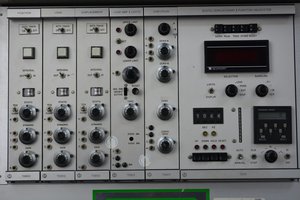
About this course:
Control Systems
Description:
Feedback systems, mathematical modelling of physical systems; Laplace transforms, block diagrams, signal flow graphs, state-space models; Time domain analysis: performance specifications, steady state error, transient response of first and second order systems; Stability analysis: Routh-Hurwitz stability criterion, relative stability; proportional integral, PI, PD, and PID controllers; Lead, lag, and lag-lead compensators; Root-locus method: analysis, design; Frequency response method: Bode diagrams, Nyquist stability criterion, performance specifications, design; Statespace methods: analysis, design; Physical realizations of controllers: hydraulic, pneumatic, and electronic controllers.
Texts:
[1] K. Ogata, Modern Control Engineering, 4th Ed., Pearson Education Asia, 2015.
[2] B. C Kuo and F. Golnaraghi, Automatic Control Systems, 8th Ed., John Wiley, 2013.
References:
[1] M. Gopal, Control Systems: Principles and Design, 2nd Ed., Tata McGraw-Hill, 2012
[2] M Gopal, Modern Control System Theory, 2nd Ed., New Age International, 1993.
[3] R. C. Dorf and R. H. Bishop, Modern Control Systems, 8th Ed., Addison Wesley, 1998.
[4] P. Belanger, Control Engineering: A modern approach, Saunders College Publishing, s1995.